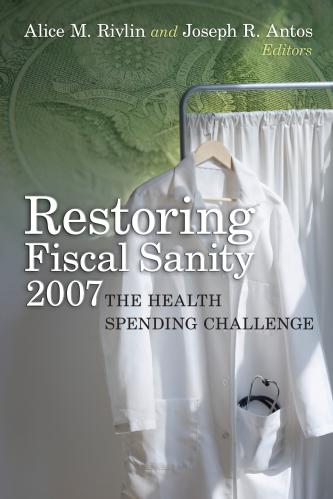There have been a lot of competing headlines lately about whether the Affordable Care Act (ACA) will actually make health insurance premiums more or less affordable for consumers. It’s easy to see why the general public might be confused: we simply don’t know yet.
Last week, the Kaiser Family Foundation added a very useful report to the public discourse about insurance rates in the health insurance marketplaces (exchanges). Kaiser concluded that, based upon their survey of 17 states, insurance rates in the marketplaces may be lower than expected, but that rates are highly variable across the country. This report was helpful for surveying what we know about rates so far; it did not try to answer the question or make an argument about the “affordability” of those rates or the value of the plans in the exchanges.
Much has been said about “rate shock,” but rate shock assumes a comparative analysis of rate projections or rates in the individual market before and after the implementation of the marketplaces. In contrast, aside from an ACA provision protecting against very expensive low value coverage, affordability will be based upon individual preferences, circumstances, and value. Thus, even when all the rates are known, the real question of affordability in the individual market will be left to the decision of individual consumers, many of whom have very limited resources and may not even expect to use the product for which they are paying.
Premium subsidies will be available for people buying insurance in the exchanges who have incomes up to 400% of the federal poverty level (FPL), but subsidies are calculated based upon an individual or family paying between 2%-9.5% of their income on premiums in order to get the subsidy. So, for example, a single non-smoking adult over 21 who is making $30,000 per year (261% of the FPL) with an annual premium cost of $3,018 will need to pay 8.37% of his income, or about $209 in premiums per month in order to get the $42.25 in monthly subsidy.
The Congressional Budget Office estimates that 6 out of the 7 million expected to enroll in the first year of the marketplace will be eligible for subsidies. The subsidies are generous and they will reduce the cost of premiums (and cost sharing) for millions of enrollees. Additionally, some beneficiaries will be able to apply their premium tax subsidy to a lower value, high deductible bronze plan for little or no premium.
But in most cases, an individual or family with other competing financial priorities will still be required to make an income allocation decision and write a check to an insurance company each month to stay in the game. Whether they can afford to do so every month for an entire year is a much different question than whether the price of plan coverage in the marketplace for the individual market will be higher or lower than it was in the individual market last year.
Three big questions will remain unanswered for the next several months as we learn more about the economic decision-making of the newly insured under Obamacare.
First, we are building it, but will they come? Obviously, this is the question of the moment. The big three indicators of success are rates, accessibility, and outreach (see my earlier article). The jury is still out on this set of indicators as this story continues to unfold. However, this is only the first question in this trilogy that will be asked and answered over the next year or so.
Second, how long will they stay and pay? The campaign to get people to enroll through the marketplaces will intensify during the next few months, and many will enroll in health insurance plans for a variety of reasons But what happens when a “young invincible” with a monthly premium has to make a decision next summer about whether he or she can afford a car or health insurance? Or what about a family at the lower end of the FPL that has to make a choice between paying a monthly premium and buying food or clothes? Will we lose a large number of these newly insured within the first few months of having their new coverage, or will they continue to pay for a benefit with no immediate satisfaction? Is a nominal “shared responsibility” penalty (greater of $95 or 1% of income in 2014) enough to induce a newly insured enrollee to pay a premium for a benefit that will carry an additional cost every time they use it (up to $6,350 in out of pocket costs in the example above)?
Third, how sticky will the benefit be for this cohort next year? As the Kaiser study pointed out, we will likely continue to see great variability among premium prices. Some have speculated that actuaries are flying blind and simply don’t know how to assess this market; others speculate that a strategy of insurers is to take a loss in the first year by offering a low premium to recover profits later with higher premiums after they capture market share. This begs the question, will these newly insured stay with the benefit if premium rates increase, even a little, or will they risk the penalty and bail from the program entirely without even bothering to look for a cheaper plan? Similarly, what happens next year when subsidies for individuals and families are re-determined and qualification for subsidies changes premium costs? Will benefit loyalty keep beneficiaries with the plan they selected as it has worked with Medicare Part D, the last major federal health expansion?
The Massachusetts experience with re-enrolling subsidy-eligible individuals and families in the second year of the program should serve as a warning that this process will not likely be smooth. These transitions can be frustrating and can lead to gaps in coverage and care.
Additionally, comparisons to Medicare Part D may be overstated.The marketplace enrollee demographic is different from Medicare and we must be prepared for the fact that enrollees may behave differently. These new marketplace enrollees are not members of “the greatest generation” and they may not share the same values of a past generation to whom they are often compared. Moreover, even subsidized premium rates in the marketplaces are generally higher than the rates for Medicare Part D drug coverage. Finally, many Medicare beneficiaries pay no premiums and many of those that do pay Part D premiums have them deducted from their Social Security checks, so they do not have to make a decision each month about how to allocate their scarce resources.
While we do have some evidence and experience from which we can make reasonable assumptions about new insurance enrollee behavior, this is largely a national experiment of first impression with plenty of variables to keep us guessing about how the “affordability” story will unfold across the country. The man, woman, or family on the street has not spoken yet, and until they do, we are purporting to walk in their proverbial shoes with regards to what is “affordable” to them. In the next few months, we will learn a lot about the initial exchange enrollment experience from these subsidy-eligible individuals and families; the next big lesson we may learn from them could be about retention.
The Brookings Institution is committed to quality, independence, and impact.
We are supported by a diverse array of funders. In line with our values and policies, each Brookings publication represents the sole views of its author(s).



Commentary
Op-edWill Health Insurance In The World Of Obamacare Be Affordable? It Depends Whom You Ask
September 12, 2013